Geography #2: Coasts & Coastal Regions
1/52
Earn XP
Description and Tags
Read Maldives Case Study!!
Name | Mastery | Learn | Test | Matching | Spaced |
|---|
No study sessions yet.
53 Terms
What are the 5 processes of coastal erosion?
Hydrualic Action, Abrasion, Attrition, Corrasion, & Solution
What is hydrualic action?
Air is forced into cracks in the rocks by the waves, widening the cracks until the rock cracks.
What is abrasion?
When materials carried by the river scrape and bang against the banks and bed, loosening material.
What is Attrition?
When rocks carried by the river collide, breaking into smaller, smoother pieces
What is solution?
When soluble particles are dissolved by the river.
What is corrasion?
Rocks are flung at the rock face by the waves chipping away pieces of rock.
What are the 4 processes of coastal transportation?
Traction, Saltation, Suspension, Solution
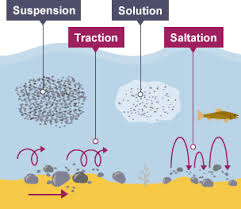
What is traction?
When large rocks are rolled along the seabed at times of high energy.
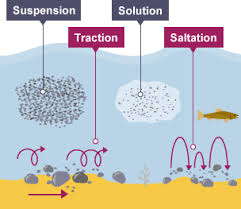
What is saltation?
The bouncing movement of rocks and pebbles along the riverbed when they are too heavy to be carried far.
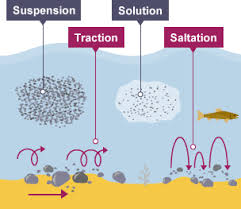
What is suspension?
Smaller material that is light enough to be continuously carried along.
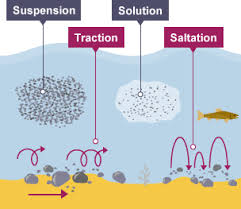
What is solution?
Very small material that is dissolved and can be transported during low energy.
What is the process for coastal transportation?
Longshore Drift
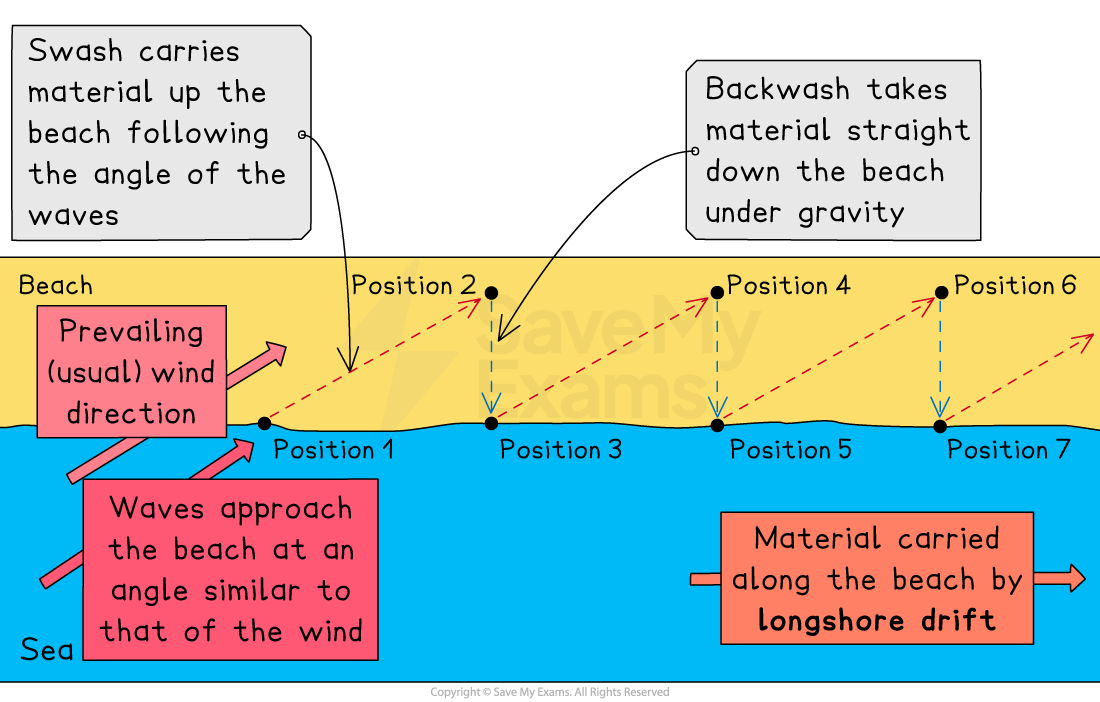
What is longshore drift?
Waves hit the beach at an angle, carrying material up the shore (swash). The water then moves back down the beach at a right angle (backwash). This zigzag motion moves material along the coast.
What are the 2 types of waves?
Constructive & Destructive
What are the four factors that determine the size of a wave?
Fetch, Wind Speed, Wind Duration, Wind Strength
What are the characteristics of a constructive wave?
The swash is strong, the backwash is weak, the wavelength is long with low height, the energy is low, the frequency is low, and the type of beach is sandy.
What are the characteristics of a destructive wave?
The swash is weak, the backwash is strong, the wavelength is short with high height, the energy is high, the frequency is high, and the type of beach is shingle.
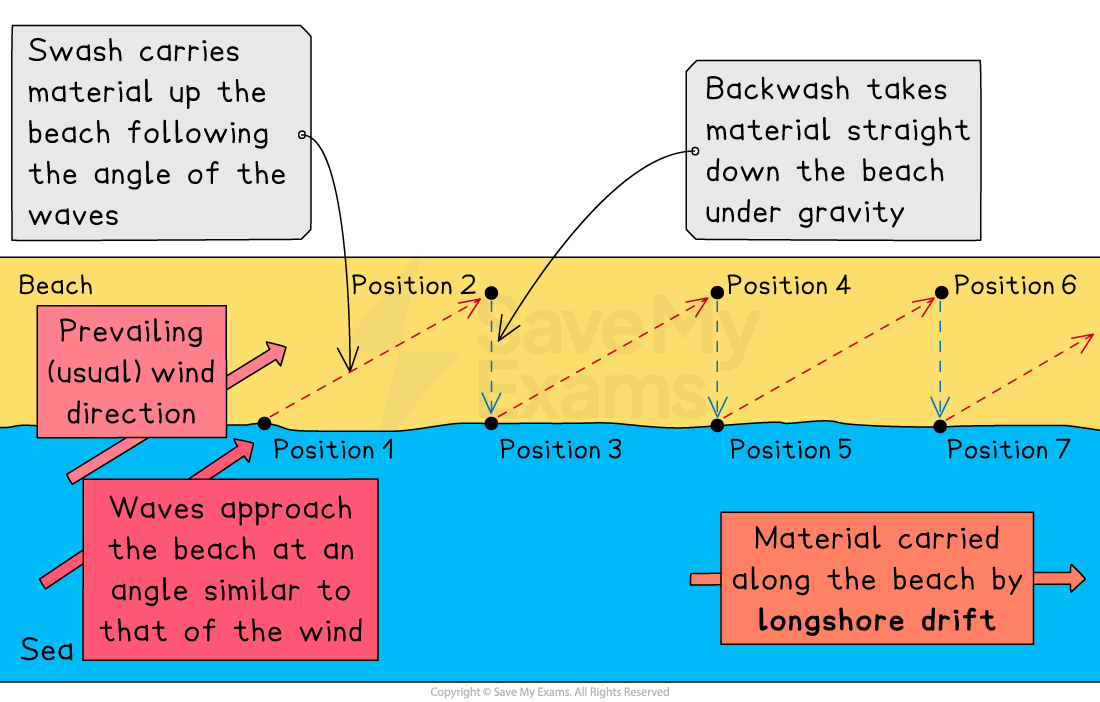
What is the swash?
The movement of water up the beach.
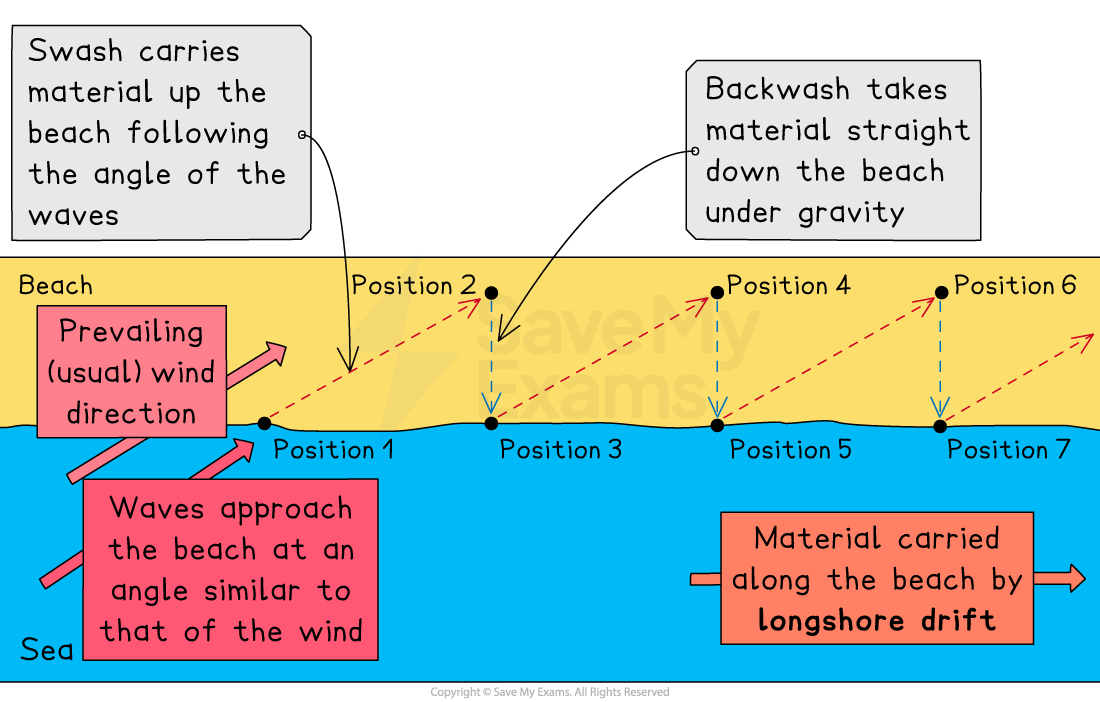
What is the backwash?
The return movement of the waves.
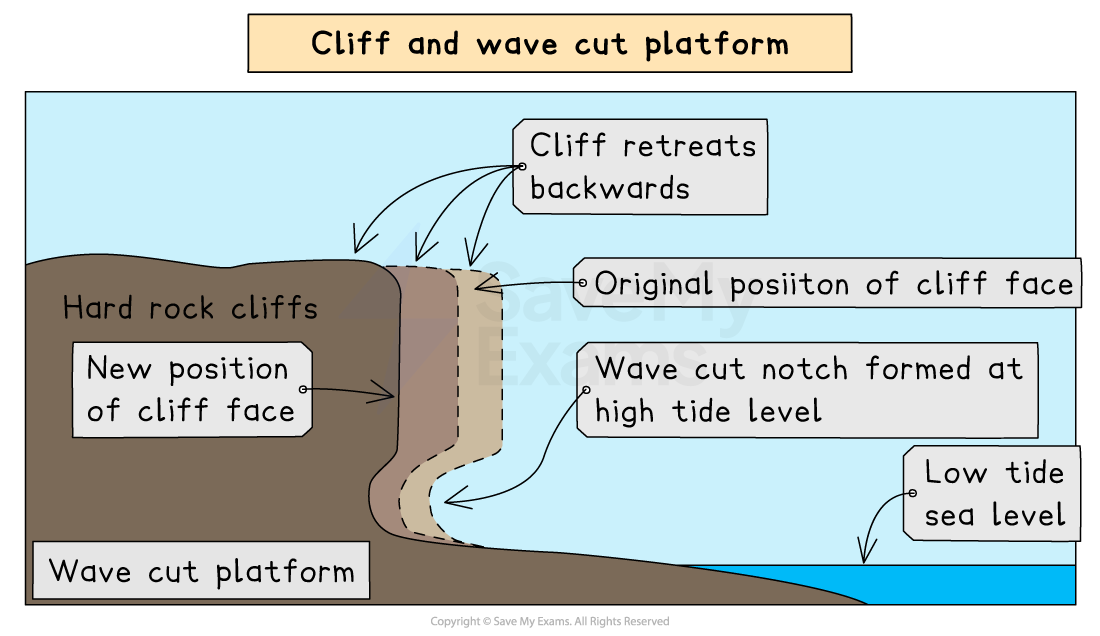
How is a cliff and wave-cut platform formed?
Cliffs are steep rock faces formed by coastal erosion. Waves attack the base of the cliff, especially at the high-water mark, creating a wave-cut notch through processes like abrasion, hydraulic action, and corrosion. As erosion continues, the notch gets deeper and the cliff above becomes unstable, eventually collapsing. The eroded rock is carried away by backwash, and a flat area of rock is left behind called a wave-cut platform. This process repeats, causing the cliff to retreat over time.
What are headlands?
A narrow piece of land made of hard rocks and protrudes into the sea.
What is the bay?
It is a body of water partially surrounded by land and is made out of soft rock.
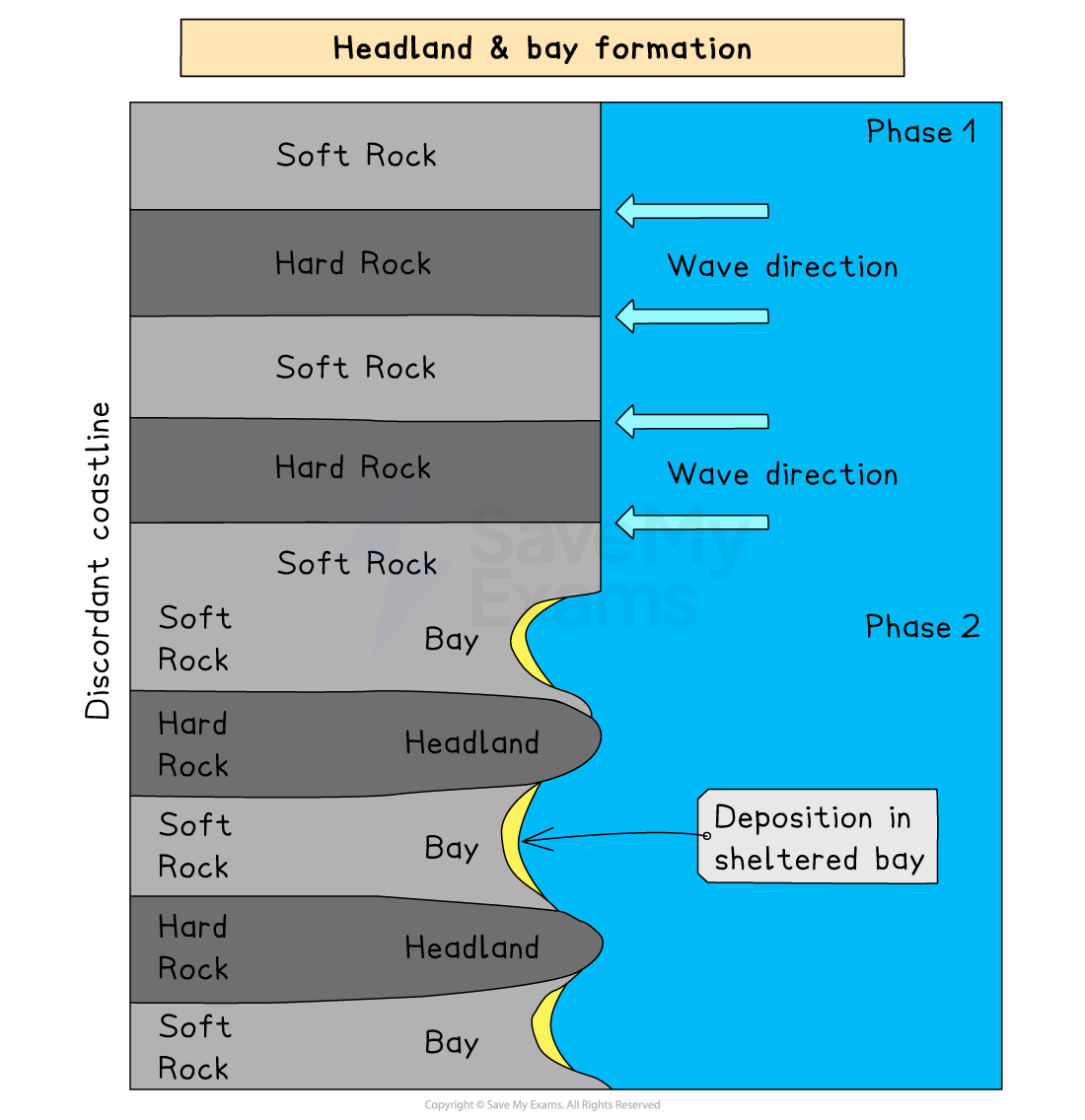
How are a headland and a bay formed?
They form on discordant coastlines where there are alternating bands of hard and soft rock at right angles to the coast. The less resistant rock (like clay) is eroded faster by waves, forming a bay. The more resistant rock (like limestone) erodes more slowly and is left sticking out into the sea as a headland.
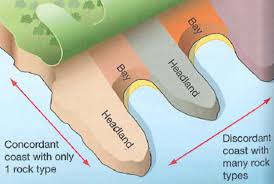
What are concordant coastlines?
Coastlines that are parallel to the coast.
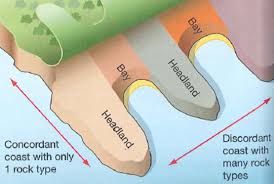
What are discordant coastlines?
Coastlines that are at a perpendicular to the coast.
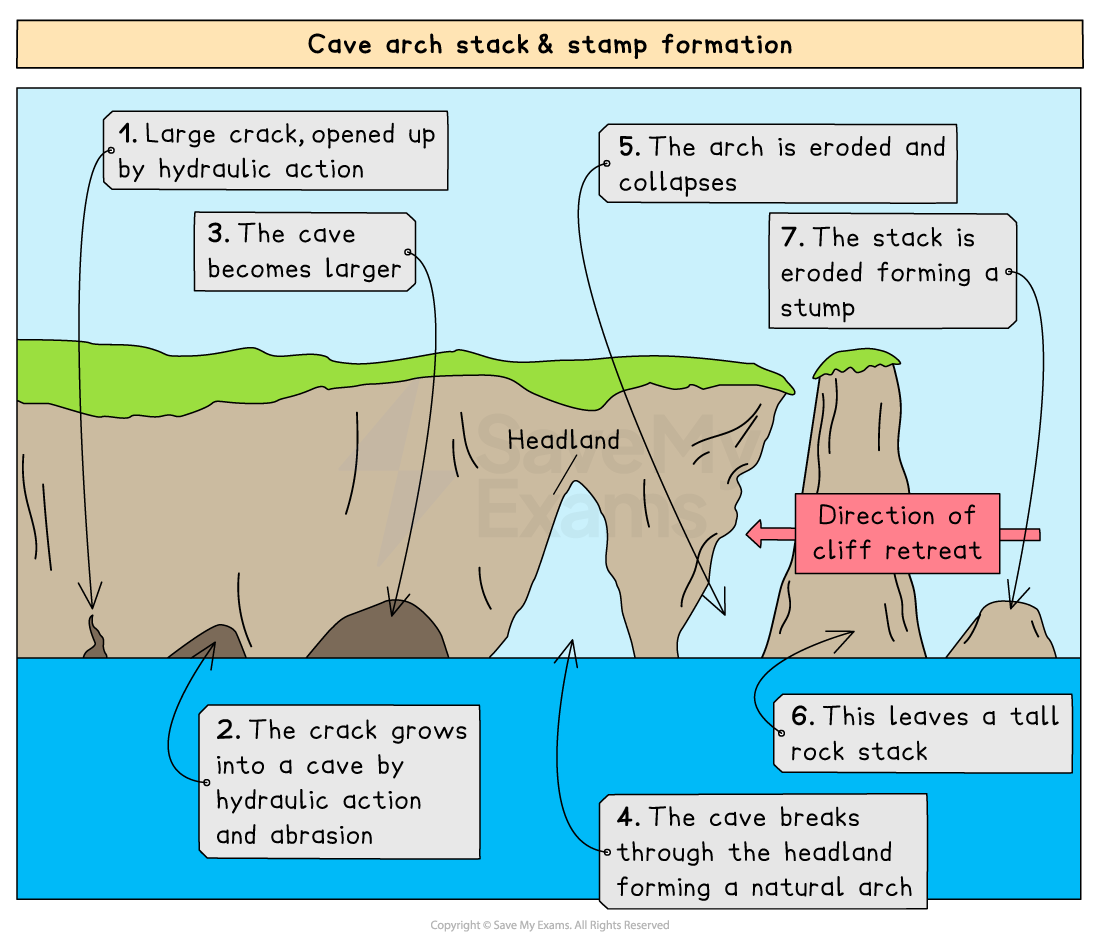
Explain the formation of caves, arches, stacks and stumps.
This sequence occurs on a headland. Marine erosion widens cracks in the base of the headland, these get bigger over time and create a cave. The cave widens and deepens due to marine erosion & sub-aerial processes, and eventually a large hole will form through the other side of the headland, known as an arch. The arch continues to widen until it cant support itself and falls through mass movement, leaving a stack. Marine erosion attacks the base of the stack, causing it to collapse into a stump.
How are beaches formed?
They form in sheltered areas like bays where constructive waves dominate. These waves have a strong swash and weak backwash, causing deposition of sand and pebbles, eventually forming a beach.
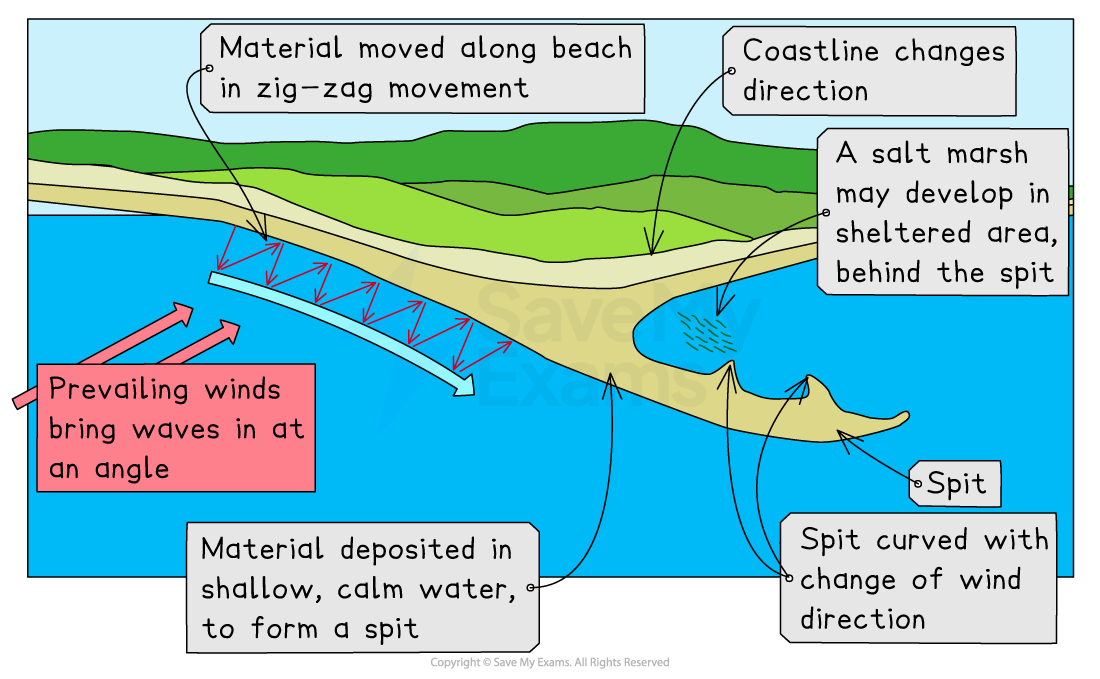
How does a spit form?
When longshore drift moves sediment along the coast. Where the coastline changes direction, the water becomes sheltered, and deposition takes place. Over time, the sediment builds up and extends out into the sea. If the wind changes direction, the end of the spit may curve, forming a hooked end.
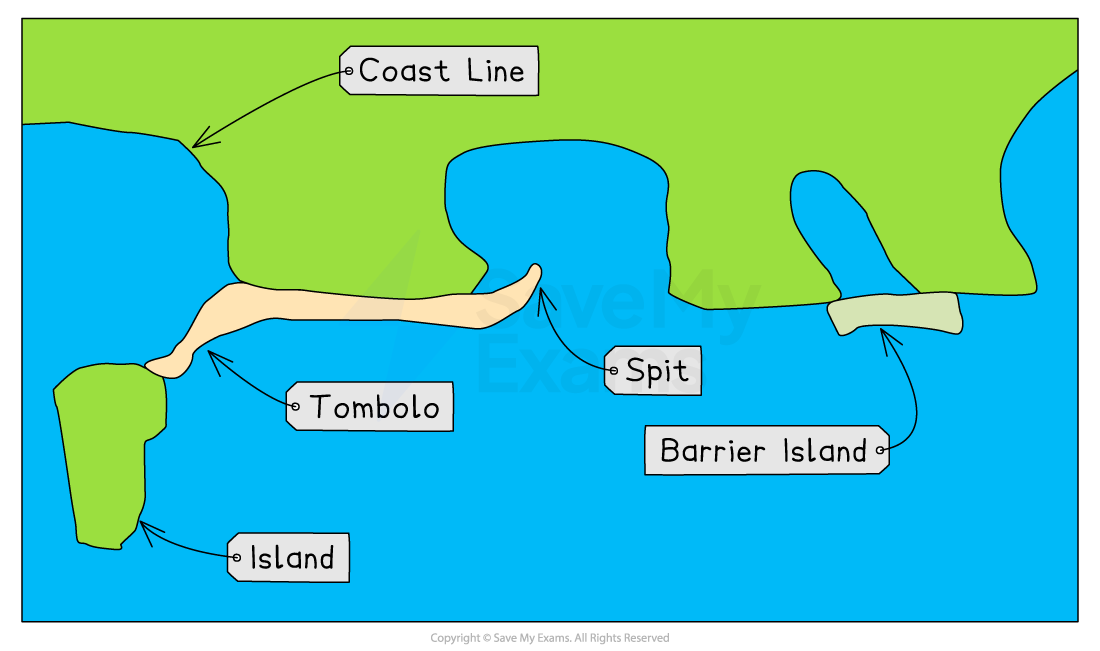
How does a bar form?
When longshore drift moves sediment along the coast and a spit grows across a bay, eventually joining two headlands.

How does a lagoon form?
When longshore drift carries sediment along the coast and deposits it between an island and the mainland. Over time, the sediment builds up, creating a narrow strip of land that joins the island to the mainland.
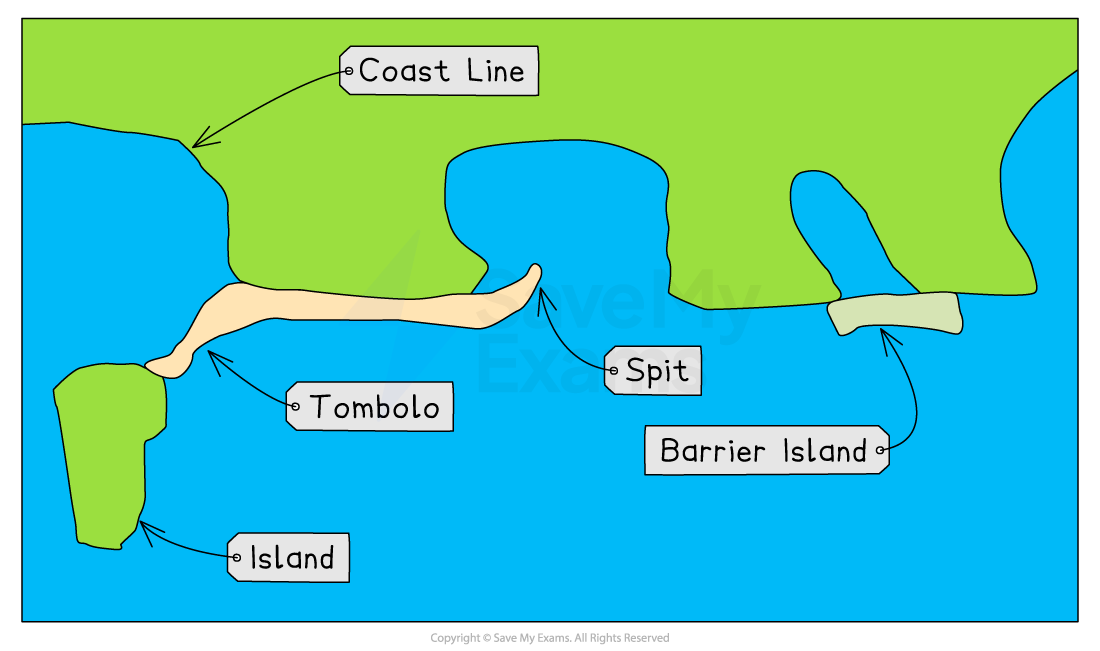
How are barriers islands formed?
A long, narrow island made of sand that forms parallel to the coast, but is separated from it by a lagoon or salt marsh. It forms when waves and currents deposit sand offshore over time.
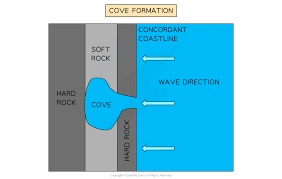
How are coves formed?
They are formed by differential erosion, the hard rock cracking as erosion weakens the cliff, exposing the soft rock behind. Over time, waves wears away the softer rock more quickly than harder rock, creating a curved, sheltered inlet.
How can concordant coasts be identified?
High Cliffs & Coves
How can discordant coasts be identified?
Headlands & Bays
How are sand dunes formed?
When the wind blows sand inland from a beach. The sand gets trapped by obstacles like rocks or plants and begins to build up. Over time, more sand is deposited, and the dune grows. The windward side is gently sloped, and the leeward side is steeper. Vegetation like marram grass helps to stabilize the dunes.
State the order of the sand dunes.
Embryo Dunes, Fore Dunes, Yellow Dunes, Grey Dunes, Dune Slacks, Mature Dunes
What are the characteristics of a embryo dune?
They are the first dunes to form, small, fragile, and 1 metre tall. Plants like Lyme Grass and Sea Couch Grass help stabilize the sand and allow the dune to grow.
What are the characteristics of a fore dune?
Marram grass helps stabilize the dune with its roots, the plant adds organic matter, allowing more plants to grow. It is bigger (up to 5m) and more stable. They give some protection against the prevailing wind, allowing new dunes to form behind them.
What are the characteristics of a yellow dune?
Yellow dunes grow up to 8 metres tall. Only 20% of sand is exposed allowing for more vegetation. The dunes darken as humus builds up in the soil. Marram grass dominates, but more flowers and insects appear. Dune slacks support varied life due to moisture.
What are the characteristics of a grey dune?
They are 8-10 metres tall. It has high biodiversity & dense vegetation, the soil becomes acidic and retains more water, and shrubs and bushes begin to grow.
What are the characteristics of mature dunes?
They are the oldest and most stable dunes, they are found hundreds of metres from the shore, it has rich soil supporting large trees (e.g. oak, alder), it is the final stage in succession known as the climax community.
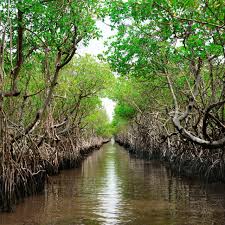
What are mangroves?
Coastal wetlands found in tropical and subtropical regions. They are made up of salt-tolerant trees with tangled roots that grow in muddy, intertidal zones.
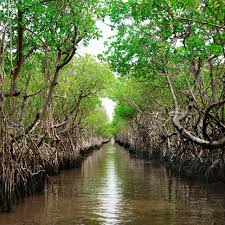
What conditions do mangroves need to live in to survive?
High levels of humidity (75–80%), High levels of rainfall (1,500–3,000 mm), Tropical or subtropical climates, sheltered coastlines, estuaries, or river mouths with low wave energy, shallow muddy water where the trees can root, and saltwater.
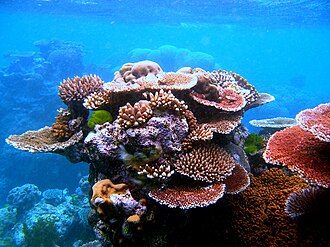
What are coral reefs?
Underwater structures made up of tiny coral polyps that build calcium carbonate skeletons. They form complex ecosystems in warm, shallow tropical seas.
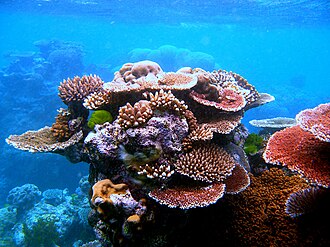
What conditions do coral reefs need to live in to survive?
They need warm salt water with temperatures of 22-25C, have 32-42% saltwater, the water needs to be well oxygenated, no sediments in the coral colonies, need light for photosynthesis due to the algae, called zooxanthellae, that live in their tissue so water should be clear and clean so sunlight can penetrate and photosynthesis can occur.
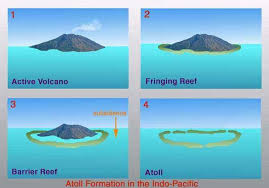
What are the 3 types of coral reefs?
Fringing Reef, Barrier Reef, Atoll
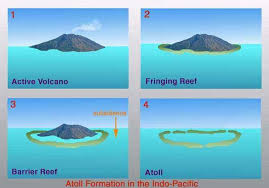
What is a fringing reef?
Low, narrow bands of coral running parallel to the coast and form around a land mass.
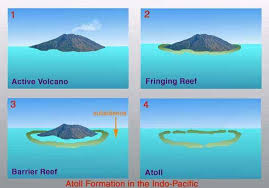
What is a barrier reef?
Wide, deep lagoons below at depths at which polyps can live separate these, which are between 500 m and several kilometres from the coast.
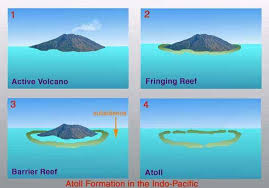
What are atolls?
Narrow, ring-shaped reefs, consisting of a coral rim that encircles a deep lagoon.
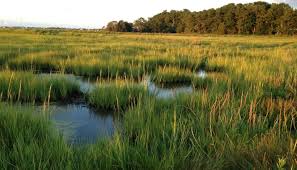
What is a salt marsh?
A coastal ecosystem found between land and open salt water or brackish water that is regularly flooded by the tides.
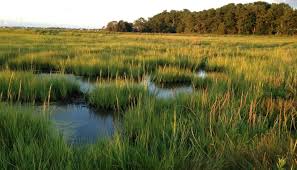
How do salt marshes form?
Mud and silt are deposited in sheltered water, such as behind a spit.
The area becomes colonised by pioneer species that trap more sediment.
Over time, more plants grow, making the soil more stable and less salty.
The marsh builds up in height and becomes less frequently flooded.
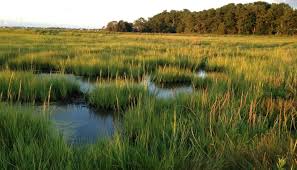
Why are salt marshes important?
They provide habitats for wildlife (especially birds and fish), act as natural flood defences – absorb storm surges, help with coastal erosion control, filter pollutants and improve water quality, and capture carbon through photosynthesis.
Why are mangroves important?
They provide nurseries for fish and marine life, protect coastlines from erosion and storm surges, trap sediment and pollutants, reduce the impact of tsunamis and flooding, and provide resources (wood, honey, medicine) and livelihoods for local communities.